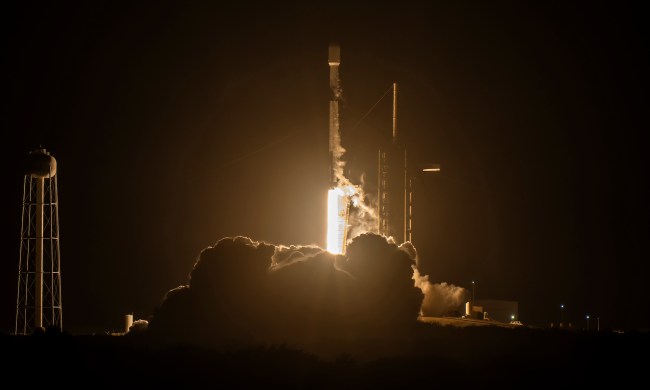Astronomers are once again worried about the effect that satellites like those used by SpaceX for its Starlink service will have on scientific research. A recent study looked at the effect that such satellites were having on observations from the Hubble Space Telescope and found that observations were already being impacted by the number of satellites nearby.
Telescopes like Hubble are particularly vulnerable to interference from satellites because of their location, in an area called low-Earth orbit (LEO). At less than 1,200 miles above the Earth’s surface, this region is prime real estate for both scientific projects like Hubble and the International Space Station and for commercial projects like satellite megaconstellations. While there have been satellites in this region for many years, recently the number of satellites has been rising dramatically, especially due to projects like Starlink which rely on having thousands of satellites in orbit.

When these satellites pass in front of telescopes like Hubble, they can leave bright streaks across the images due to reflected sunlight which makes the data scientifically useless. The researchers found that just a small fraction of Hubble images are currently affected, at less than 1%, but they did show a variety of images with ruinous streaks like the one above. And the biggest concern is for the future, with more and more satellites set to launch in the next few years.
“The fraction of HST images crossed by satellites is currently small with a negligible impact on science. However, the number of satellites and space debris will only increase in the future,” the authors write.
To illustrate the potential scale of the problem, they give data on the current number of satellites compared to estimates for the number of satellites being launched in the next decade. “By the date of this analysis, there were 1562 Starlink and 320 One Web satellites in orbit, increasing the population of satellites close to the orbit of [Hubble],” they write. “Nevertheless, the number of satellites in LEO will only increase in the future, with an estimated number of satellites in LEO between 60,000 and 100,000 by the 2030s.”
SpaceX has made efforts to reduce the impact of its satellites on astronomical observations like painting them a darker color and adjusting their orbit so less reflect less sunlight. But as this study demonstrates, the issue of who gets to use space and whether priority should be given to scientific research or private companies is not going away any time soon.
The research is published in the journal Nature Astronomy.



